Track Categories
The track category is the heading under which your abstract will be reviewed and later published in the conference printed matters if accepted. During the submission process, you will be asked to select one track category for your abstract.
Veterinary science is important to the study of livestock, herd health and monitoring the spread of disease. It requires the application of scientific knowledge in multiple areas and the use of technical skills in disease prevention that may affect both pets and wild animals. Animal Production facilitates improvements
Veterinary Research helps human health through the monitoring and control of zoonotic disease (infectious disease transmitted from non-human animals to humans), food safety, and indirectly through human applications from basic medical research. They also help to maintain food supply through livestock health monitoring and treatment, and mental health by keeping pet’s healthy and long living. Veterinary scientists often collaborate with epidemiologists, and other health or natural scientists depending on type of work. Ethically, veterinarians are usually obliged to look after animal welfare.

Veterinary medicine is the branch of medicine that deals with the prevention, diagnosis and treatment of disease, disorder and injury in non-human animals. The scope of veterinary medicine is wide, covering all animal species, both domesticated and wild, with a wide range of conditions which can affect different species.Veterinary medicine is widely practiced, both with and without professional supervision. Professional care is most often led by a veterinary physician (also known as a vet, veterinary surgeon or veterinarian), but also by paraveterinary workers such as veterinary nurses or technicians. This can be augmented by other paraprofessionals with specific specialisms such as animal physiotherapy or dentistry, and species relevant roles such as farriers.
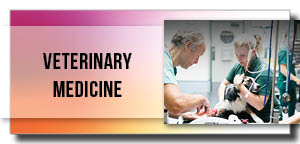
'One Health' is an approach to designing and implementing programs, policies, legislation and research in which multiple sectors communicate and work together to achieve better public health outcomes.
The areas of work in which a One Health approach is particularly relevant include food safety, the control of zoonoses (diseases that can spread between animals and humans, such as flu, rabies and Rift Valley Fever), and combatting antibiotic resistance (when bacteria change after being exposed to antibiotics and become more difficult to treat).
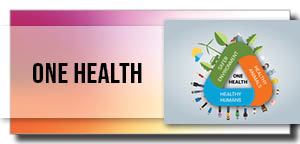
The Animal Health Biotechnology industry has encountered unfaltering development over the five years to 2018. Rising innovative work (R&D) use, which developed at an annualized rate of 2.6% amid the five-year time frame, has empowered organizations to put resources into and grow new items to help industry development. Over the five years to 2023, IBIS World anticipates that income development will stay solid and increment at an annualized rate of 1.4% to $8.7 billion.
Animal Disease an impairment of the normal state of an animal that interrupts or modifies its vital functions.Concern with diseases that afflict animals dates from the earliest human contacts with animals and is reflected in early views of religion and magic. Diseases of animals remain a concern principally because of the economic losses they cause and the possible transmission of the causative agents to humans.

Animal breeding is a branch of animal science that addresses the evaluation (using best linear unbiased prediction and other methods) of the genetic value (estimated breeding value, EBV) of livestock. Selecting for breeding animals with superior EBV in growth rate, egg, meat, milk, or wool production, or with other desirable traits has revolutionized livestock production throughout the world.

Animal nutrition focuses on the dietary needs of animals, primarily those in agriculture and food production, but also in zoos, aquariums, and wildlife management. There are seven major classes of nutrients: carbohydrates, fats, fiber, minerals, proteins, vitamins, and water.Animal nourishment concentrates on the dietary needs of domesticated animals, principally those in horticulture and food production. There are seven noteworthy classes of supplements: sugars, fats, fiber, minerals, protein, vitamin, and water. Most foods contain a blend of a few or the greater part of the supplement classes, together with different substances, for example, toxins or different sorts. A few supplements can be stored internally (e.g., the fat solvent vitamins), while others are required pretty much persistently. Weakness can be caused by an absence of required supplements or, in extraordinary cases, a lot of a required supplement.
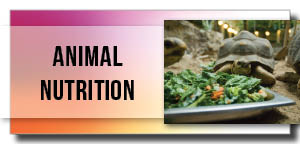
Veterinary chiropractic also known as animal chiropractic is the practice of spinal manipulation or manual therapy for animals. Veterinary chiropractors typically treat horses, racing greyhounds, and pets. It has become a fast developing field in animal alternative medicine.
It remains controversial within certain segments of the veterinary and chiropractic profession. There is some degree of risk associated with even skilled manipulation in animals as the potential for injury exists with any technique used.
The founder of chiropractic, Daniel David Palmer, used the method on animals, partly to challenge claims that the placebo effect was responsible for favorable results in humans. Chiropractic treatment of large animals dates back to the early 1900s. As of 2016, 40 states in the US provide statutory or regulatory guidelines for the practice of chiropractic and related treatments on animals, generally requiring some form of veterinary involvement.
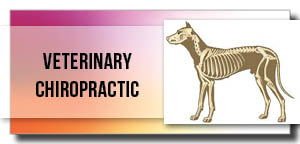
Poultry farming is the process of raising domesticated birds such as chickens, ducks, turkeys and geese for the purpose of farming meat or eggs for food. Poultry - mostly chickens - are farmed in great numbers. Farmers raise more than 50 billion chickens annually as a source of food, both for their meat and for their eggs. Chickens raised for eggs are usually called layers while chickens raised for meat are often called broilers.

Veterinary dentistry is the field of dentistry applied to the care of animals. It is the art and science of prevention, diagnosis, and treatment of conditions, diseases, and disorders of the oral cavity, the maxillo-facial region, and its associated structures as it relates to animals.

The worldwide veterinary immunization advertise is required to reach at a CAGR of 6.2% to achieve USD 12.6 billion by 2025, as indicated by new report by Grand View Research. The huge goals of veterinary antibodies is to improve the prosperity and welfare of accomplice animals, increase age of trained creatures for all intents and purposes, and keep animal to-human transmission from both private animals and characteristic life. Rabies inoculations for nearby animals and untamed life have nearly wiped out human rabies in made countries.
Veterinary care is a representative piece of animal care and utilizes Program. The essential concentration of the veterinarian is to focus on the prosperity and clinical care of animals. Utilized as a part of research, testing, educating, and production. This duty agrees of observing and the advancement of animal prosperity constantly amid all periods of the life of animals.
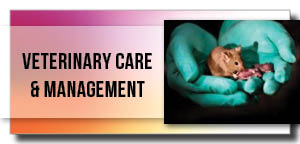
Ethology is the scientific and objective study of animal behaviour, usually with a focus on behaviour under natural conditions, and viewing behaviour as an evolutionarily adaptive trait. Behaviourism is a term that also describes the scientific and objective study of animal behaviour, usually referring to measured responses to stimuli or trained behavioural responses in a laboratory context, without a particular emphasis on evolutionary adaptivity
Ethology is a rapidly growing field. Since the dawn of the 21st century, many aspects of animal communication, emotions, culture, learning and sexuality that the scientific community long thought it understood have been re-examined, and new conclusions reached. New fields, such as neuroethology, have developed.
Understanding ethology or animal behaviour can be important in animal training. Considering the natural behaviours of different species or breeds enables the trainer to select the individuals best suited to perform the required task. It also enables the trainer to encourage the performance of naturally occurring behaviours and also the discontinuance of undesirable behaviours.

The protection and welfare of animals is an area covered by a wide range of legislation. This includes the protection of wildlife, zoo animals, farm animals, animals in transport and animals used for scientific purposes. Animal studies, whether for the development or production of new medicines, for physiological studies, for studying environmental effects or for the testing of chemicals or new food additives, has to be carried out in compliance with legislation.

Veterinary epidemiology is a key component in a number of the global grand challenges relating to disease control, food security and climate change. Consequently, there is a need to improve our ability to understand, predict and respond to patterns and dynamics of disease and to control outbreaks.
Camel thought to have been first trained by local individuals over 5,000 years prior, these solid creatures have demonstrated imperative to the survival of people in these regions as they are not simply utilized for transporting the two individuals and merchandise, yet additionally give a decent wellspring of drain, meat and fleece. The Camel is a standout amongst the most special warm-blooded creatures on the planet and has adjusted superbly to life in the desert where sustenance and water can frequently be rare and the temperature changes quickly from the searing hot days to the cooler evenings. Be that as it may, in spite of the fact that they would have once been discovered openly wandering the Arabian deserts, they are today wiped out from the wild however the household populace is across the board and various. Veterinary meeting welcoming dynamic on propels in camel science.

Wildlife rehabilitation is the treatment and care of injured, orphaned, or sick wild animals so that they can be released back to the wild.
Rehabilitation begins when an animal is found and reported to a wildlife rehabilitator, or seized from the illegal wildlife trade or a poacher. The rehabilitator will examine the animal to determine the extent of the injury and the probability of successful rehabilitation. If it appears that the animal can make a sufficient recovery to be able to return to the wild, the animal will be fed, nurtured, provided safe temporary housing, and medically treated as necessary.
Animals that cannot be rehabilitated are usually euthanized humanely, although animals are occasionally placed at facilities appropriately licensed for educational exhibit or brought into appropriate lifetime care in a wildlife rescue center.
A non-releasable animal may sometimes be kept by the rehabilitator (under separate permit) as a surrogate parent for orphaned or injured young wildlife.
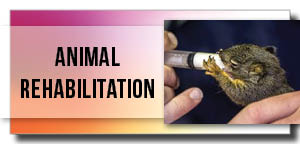
Animal welfare is the prosperity of creatures. The models of good animal welfare change significantly between various contexts. These norms are under steady audit and are discussed, made and reexamined by animal welfare groups, lawmakers and scholastics worldwide. Animal welfare science utilizes different measures, for example, life span, sickness, immunosuppression, conduct, physiology, and reproduction, although there is debate about which of these markers give the best information. Concern to animal welfare is frequently in light of the conviction that non-human creatures are aware and that thought ought to be given to their prosperity or enduring, particularly when they are under the care of people.
Human worry for creature welfare incorporates how creatures are murdered for sustenance, how they are utilized for logical research, how they are kept as pets and how human exercises influence the survival of jeopardized species. Creature welfare isn't just about guaranteeing a creature isn't dealt with remorselessly or caused superfluous agony or enduring, it is tied in with guaranteeing that a creature's physical express, its psychological state and its capacity to satisfy its regular needs and wants are considered and taken care of.

Animal Reproduction and Genetics describes how animals compete with other individuals to maintain themselves for a period of time that would be sufficient to enable them to produce tissue that would be indispensable to the maintenance of their species. Animal genetics impart advance breeding technology and testing services such as genetic trait tests, DNA typing and genetic disease tests and Animal genetics is a branch of genetics that studies heredity and variation chiefly in farm animals but also in domestic and wild animals. It is based on general genetic principles and concepts, and it mainly uses the hybrid, cytological, population, ontogenetic, mathematical-statistical and twin methods of general genetics.

The worldwide creature wellbeing market measure is relied upon to achieve USD 64.6 Billion by 2025 ascending at a CAGR of 5.5%. The protection of animal prosperity and the control of animal contaminations is a fundamental piece of tamed creature husbandary. Watching animal prosperity and staying away from animal disease scenes is vital to the economy and security of the country's sustenance supply.
Veterinary Microbiology is concerned with microbial (bacterial, fungal, viral) diseases of domesticated vertebrate animals (livestock, companion animals, fur-bearing animals, game, poultry, but excluding fish) that supply food, other useful products or companionship. In addition, Microbial diseases of wild animals living in captivity, or as members of the feral fauna will also be considered if the infections are of interest because of their interrelation with humans (zoonoses) and/or domestic animals. Studies of antimicrobial resistance are also included, provided that the results represent a substantial advance in knowledge.

Zoonoses are infectious diseases that can be naturally transmitted between animals (usually vertebrates) and humans.Major modern diseases such as Ebola virus disease and salmonellosis are zoonoses. HIV was a zoonotic disease transmitted to humans in the early part of the 20th century, though it has now evolved to a separate human-only disease. Most strains of influenza that infect humans are human diseases, although many strains of swine and bird flu are zoonoses; these viruses occasionally recombine with human strains of the flu and can cause pandemics such as the 1918 Spanish flu or the 2009 swine flu. Taenia solium infection is one of the neglected tropical diseases with public health and veterinary concern in endemic regions. Zoonoses can be caused by a range of disease pathogens such as viruses, bacteria, fungi and parasites; of 1,415 pathogens known to infect humans, 61% were zoonotic. Most human diseases originated in animals; however, only diseases that routinely involve animal to human transmission, like rabies, are considered direct zoonosis.
Zoonoses have different modes of transmission. In direct zoonosis the disease is directly transmitted from animals to humans through media such as air (influenza) or through bites and saliva (rabies). In contrast, transmission can also occur via an intermediate species (referred to as a vector), which carry the disease pathogen without getting infected. When humans infect animals, it is called reverse zoonosis or anthroponosis

Hematology, also spelled haematology, is the branch of medicine concerned with the study of the cause, prognosis, treatment, and prevention of diseases related to blood. It involves treating diseases that affect the production of blood and its components, such as blood cells, hemoglobin, blood proteins, bone marrow, platelets, blood vessels, spleen, and the mechanism of coagulation. Such diseases might include hemophilia, blood clots, other bleeding disorders and blood cancers such as leukemia, multiple myeloma, and lymphoma. The laboratory work that goes into the study of blood is frequently performed by a medical technologist or medical laboratory scientist. Many hematologists work as hematologist-oncologists, also providing medical treatment for all types of cancer.

It is all encompassing methodology went for planning the utilization of various logical orders and strategies amid an examination of malady or debilitated efficiency or welfare. Epidemiological examination includes field thinks about or reviews are being directed and models of epidemiological issues can be created.
Skin tumors are the most regularly analyzed sort of tumor in residential creatures in view of steady introduction of creature skin to the sun and outer condition. Disease is the significant reason for death in pet creatures. In the event that treatment is proper this may incorporate chemotherapy and medical procedure or radiotherapy.
Dairy farming is a class of agriculture for long-term production of milk, which is processed (either on the farm or at a dairy plant, either of which may be called a dairy) for eventual sale of a dairy product.
Centralized dairy farming as we understand it primarily developed around villages and cities, where residents were unable to have cows of their own due to a lack of grazing land. Near the town, farmers could make some extra money on the side by having additional animals and selling the milk in town. The dairy farmers would fill barrels with milk in the morning and bring it to market on a wagon. Until the late 19th century, the milking of the cow was done by hand. In the United States, several large dairy operations existed in some northeastern states and in the west that involved as many as several hundred cows, but an individual milker could not be expected to milk more than a dozen cows a day. Smaller operations predominated

Veterinary toxicology has grown into a multifaceted discipline that utilizes many diverse sources of toxicological information. Veterinary toxicologists can be involved in basic toxicology research, clinical toxicology, regulatory toxicology, chemical risk assessment and chemical food safety in private, academic, clinical, government, and commercial settings, among others. Like many areas of science, veterinary toxicology information is being generated at rates much higher than most professionals can access it and incorporate its principles into practice. Veterinary toxicologists need access to a wide variety of information sources to remain abreast of current toxicologic information and to make sound clinical choices. The internet has provided the veterinary toxicologist with a valuable tool to access both historical and cutting-edge research information in a timely and cost-effective manner.
Veterinary Forensic Sciences is the convergence of a broad spectrum of sciences, including veterinary medicine, to provide answer to the questions of interest at a court of law related to animal abuse. It can be used to solve the animal related crime. Veterinary forensics is a continuous growing field that holds vast opportunities for research. As the field becomes more prominent, new areas of specialization will open up; giving investigators the chance to become specialists in one specific aspect of veterinary forensics and each of these will provide research opportunities. The melding of human and veterinary forensics will subsequently benefit society, protecting people and animals alike.